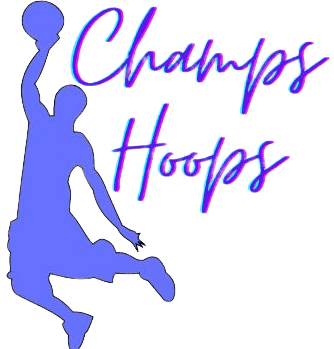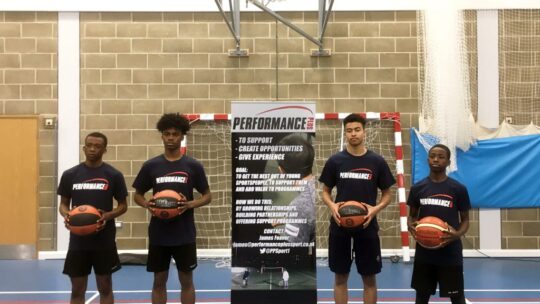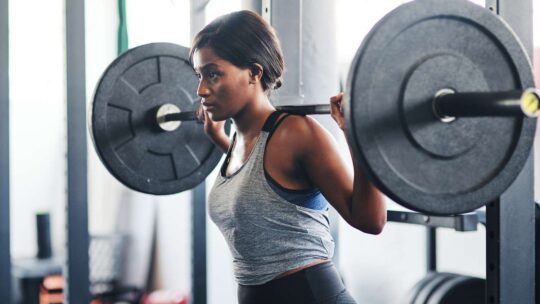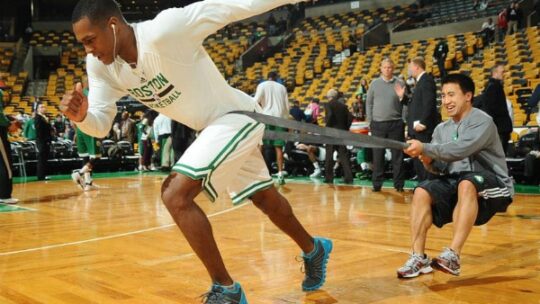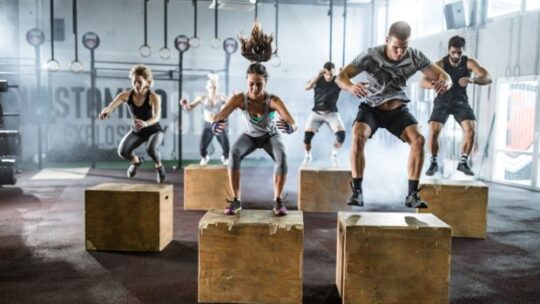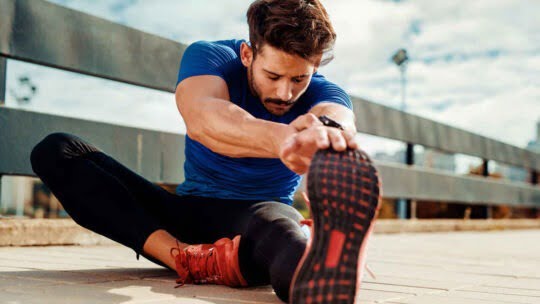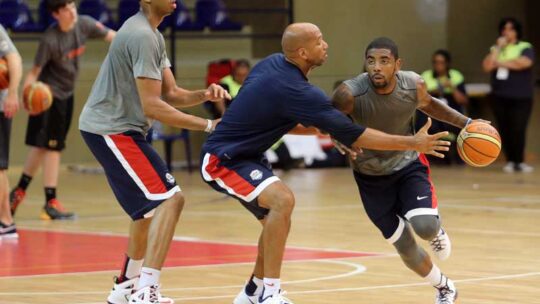The 6 Pillars of Performance Development for the Greatest Athletes
It is crazy that a man named James Naismith, probably bored one day, created a simple game now considered the habitat of the “greatest athletes on earth.” From this perspective, the game level has changed so much in speed, ability, power, and strength that a young (very talented) athlete must go through extreme measures to be able to compete at the highest levels of this game.
Aside from practicing one’s fundamental basketball skills, the commotion of performance training has been the buzzword in the athletic domain. Substant corporate centers (RDV Sportsplex/Orlando, FL; Athletes Performance/Tempe, Arizona; IMG Academies/ Bradenton, FL) are dedicated to raising the level of every paying athlete who walks through their doors. These programs give athletes the highest performance training possible, starting as early as five years old!
As the director of sport-specific training at the RDV Sportsplex in Orlando, FL (home of the Orlando Magic), I work with young aspiring athletes and some of the greatest athletes in the world. I have worked with these athletes, and in my research, I have found 6 Pillars to develop your athletic potential.
- Functional Strength Training
- Explosive Resisted Training
- Available Power and Plyometric Training
- Joint Stability, Flexibility, and Training
- Movement Skill Training/Metabolic Conditioning
- Hard Work, Dedication, and Effort
If you aspire to develop your athletic potential, I suggest implementing these six pillars into your training routine. Like Larry Bird’s coach reminded him, “No matter how hard you work, there’s always someone out there working harder.” You should always remind yourself of this and help that push you to seek guidance to becoming the best athlete you can be.
Here is a breakdown of the 6 Pillars of Performance Development:
PILLAR I. Functional Strength Training
Get off the barbell squat and bench press wagon if you want to increase your basketball strength. “How much can you bench?” It is still a common question asked by athletes. And the answer to that should be, “Who cares.”
Functional strength training centers around developing concentric (shortening of the muscles), eccentric (lengthening of the muscles), and isometric (stabilizing the muscles), using multi-joint, multi-planar exercises in multi-sensory environments. What is all that? In a nutshell, functional strength trains strength and power using functional movements.
For example, A standard bench press will strengthen the front of the shoulders, the triceps, and the pecs. A good dumbbell chest press on a stability ball works not only these muscles. Still, it challenges the body by using stabilization muscles in the abdominal, hip, and lower back areas to stabilize the body while performing the exercise. Result: more excellent joint stability and greater strength.
When getting ready to start your Functional Strength Training Program, I recommend that you:
- Seek guidance: These exercises can be complex and demanding and must be progressed. Most athletes want to jump into the most challenging progression right away. Don’t! You must give yourself time to develop essential stability and core strength in the joints and muscles.
- Avoid exercises where you are sitting down: Instead of doing seated leg extensions and curls, barbell bench presses, or lat pulldowns, do dumbbell squats, lunges, push-ups, and pull-ups to begin your functional strength development.
- Focus on joint stabilization and control throughout the whole movement. A controlled muscle is a strong muscle. Don’t just start firing off reps; control every movement to obtain optimal functional strength.
PILLAR II. Explosive Resisted Training
These are also classified as Olympic lifts. These exercises include exercises such as the power clean, hang clean, and snatch. These exercises help the athlete develop peak power. If athletes could perform only one type of exercise, I would have them do explosive resistance training.
Basketball displays a chaotic array of powerful movements. Explosive resistance training teaches the neuromuscular system to produce a significant amount of force in a concise amount of time.
Can you think of an explosive athlete? How about Kobe Bryant or Ben Wallace? Have you ever noticed how quickly Kobe Bryant gets to the rim on his dunks, or have you ever wondered why Ben Wallace, at 6’9″ tall, can out-rebound seven-footers consistently? It is because they are so explosive!!! Every athlete must develop their explosiveness, and explosive resisted training is best.
When getting ready to start your Explosive Resisted Training Program, I recommend that you:
- Seek Guidance: These exercises demand correct form and technique to be perfected. Only attempt these exercises by learning proper mechanics.
- Begin learning techniques with zero or little weight. Olympic athletes spend months and months practicing technique with no weight! You must learn the method so you can not only maximize your power but so you don’t get hurt.
- Use dumbbells, not barbells: Dumbbells are more functional for basketball athletes, easier to learn, and great for developing usable power. I mainly only use dumbbells for basketball players I work with for this type of training.
- If you can’t find anyone to teach you, use functional power training (next section) until you are properly instructed
PILLAR III. Functional Power and Plyometric Training
Jump training, quickness training, and explosive training are all other catchwords for these monsters. Both available power and plyometric training are critical for an athlete’s speed and power development. Practical power training uses the body weight or very light resistances to help overcome the body’s “inertia” (get the body moving) from a static or stationary position.
An example would be squat jumps or broad jumps. These exercises help the body become more explosive and also help the body to be able to decelerate itself after explosive movements. Plyometrics train the elasticity and “quickness” of the muscles. If you’ve researched anything about basketball or jump training, you quickly found this interesting training method.
In simple terms, plyometrics make the muscles more explosive by challenging the “stretch-shortening cycle” of the muscles, utilizing the elastic properties of the muscles, thus increasing the speed of force created in quick movements. Examples of these exercises are: tuck jumps, depth jumps, and barrier jumps.
The key to these exercises is quickness. Spend no time on the ground, and “pop” off it as if it were on fire! The key to functional power training is to explode from a stationary position as quickly as possible and decelerate the body upon landing in a balanced place, ready to explode again.
When getting ready to start your “Functional Power and Plyometric Training Program.”
- Seek Guidance: These exercises are very demanding on the body and must be progressed correctly. Overdoing these exercises can cause overtraining injuries such as patellar tendonitis (jumper’s knee) or other damages.
- Do not use resistance- Your body weight is sufficient.
- Do these exercises on a soft surface like grass; this will help prevent overtraining injuries.
PILLAR IV. Joint Stability, Flexibility, and Mobility Training
“Touch your toes and count to 10” is, unfortunately, still the primary method of warm-up and stretching for many athletes. For you “hold the stretch lovers,” I just wanted to let you know that static stretching before competitions and training sessions has been proven to s l o w y o u d o w n.
Static stretching in recent research explained static stretching might actually “turn off the muscles” and make them less potent if done before a training session or competition. So what do we do? The answer is the dynamic warm-up consisting of sub-maximal movement exercises and dynamic flexibility.
Dynamic flexibility takes the body through progressive functional movements that challenge joint stability, mobility, and balance. These exercises are the BEST way to prepare the body for a game, practice, or training session.
Performance warm-up exercises include jogging, shuffling, carioca, skips, backpedals, butt kicks, dynamic stretches, forward lunges, lateral lunges, crossover lunges, single-leg hamstring stretches, and sumo squats.
When getting ready to start your Joint Stability, Flexibility, and Mobility Training Program:
- Seek Guidance: All coaches and training principles still need to recognize these exercises. However, the newer books and any performance coach will emphasize these exercises in the warm-up.
- Warm up before every practice, game, and training session with these if you genuinely want to get the introduction you need
- Focus on going through a complete range of motion, maintaining excellent posture and form during these dynamic movements.
PILLAR V. Movement Skill Training
Just as every day practicing your jump shot and dribbling skills, if you want to be a great mover, you must focus on perfecting your movement skills. Acceleration, lateral movements, crossovers, backpedals, and changing directions are all skills that can be mastered with the proper training and the correct progressions.
Elite tennis players believe that 70% of the success of their game is based on footwork and spend hours a day developing their movement patterns. Basketball and tennis players share many of the same movement patterns: quick reactions, change of direction, dynamic balance, acceleration, and deceleration.
Great basketball players must have great footwork. Perfect footwork means you do not take any extra steps. Thus, as they say, you do not waste any excess energy, and you’re “one step quicker” than the rest of the pack. You are not one step quicker; the other guy is just taking more inefficient steps.
Movement training must be based on the fundamentals of movement and learning how to properly sprint, accelerate, decelerate, move laterally, crossover, backpedal, and react. These can be trained through motor skill training, which is best accomplished using an experienced coach to guide your development of movement skills.
Metabolic training is training the metabolic pathways, aerobic and anaerobic systems, to be efficient. This is what you might call “conditioning.” These exercises include jogging, sprinting, or other movement drills to train the aerobic and anaerobic pathways. Basketball is primarily an anaerobic sport, and anaerobic fitness should be the chief system trained.
When getting ready to start your Movement /Metabolic Training Program:
- Seek Guidance: The help of a good movement training coach can help you develop “sweet feet,” as I like to call them.
- Focus on fundamentals: You don’t just go out and start bombing three-pointers off screens when you are trying to develop your shot. The same applies to any motor skill. It would help if you started simple, and it must begin with the brain learning the craft and linking it to the rest of the body, creating a motor program.
- Train the aerobic system at the beginning of the off-season (20-40 minutes of continuous exercise at 65-85% of max heart rate). As you approach the seasoned train, use anaerobic intervals (5-30-second intervals with a 1:2 or 1:3 work-to-rest ratio, working at greater than 85% of max HR).
PILLAR 6: Hard Work, Dedication, and Effort
“I’ve always believed that the results will come if you put in the work. I don’t do things half-heartedly. Because I know if I do, then I can expect half-hearted results.” A basketball player by the name of Michael Jordan once said.
This is the last but not least of the 6 Pillars of athletic development. In fact, without these, you may have never read this article because it will do you no good.
These are the tried and true 6 Pillars of Performance Development for the basketball athlete. Implementing these into your routine and the daily quest for becoming the basketball player you can be will be critical to your success.
